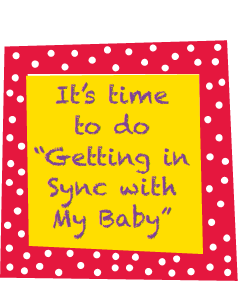We did not receive any specific questions to answer this week, so we will talk a little bit about a concern that comes up fairly frequently. We all understand the importance of a secure attachment relationship between a child and his or her primary caregiver. Sometimes, unfortunately, our assessments of this relationship indicate a need to foster more empathic and nurturing parenting practices. So how exactly can Home Visitors cultivate the growth of secure attachment relationships?
Let’s start with what exactly we mean by “cultivate.” Cultivate could be described as nurturing, promoting, encouraging, supporting, helping, or improving. As a Home Visitor, one of your goals is to help support that secure attachment relationship. There are various attachment tools that are integrated into your GGK/GGF curricula. As a matter of fact, because all healthy childhood development has its foundation in a secure attachment relationship, fostering this growth is the primary focus of every GGK module. For our tip this week, let’s zero in specifically on the tool we call “Getting in Sync with My Baby.”
This tool aims to get parents to not only pay attention to what their baby is experiencing, but also to “Take Action” in the form of an empathic response to the child’s needs/wants. Practicing this attachment tool for a few minutes during EVERY visit will set the stage for nurturing, empathic parenting that contributes to a secure attachment relationship between parent and child. Getting in Sync with my Baby/Child also supports the growth of e-parenting skills by making sure that during every visit you encourage the parents to practice paying attention to the child’s cues and then taking action…After all, Practice Makes Permanent!
If you haven’t already done so with all your families, take some time to introduce them to this tool. Be sure to laminate a colorful copy of this handout to have with you for reference during your visits. Set a goal for yourself to use it on all visits. Remember that everything we do is skill-based so you and the parents have to practice it in order to build mastery.
Remember the importance of reflection and feedback as you grow your skill at using this specific attachment tool with families. Share parents’ responses with your supervisor and co-workers and discuss how it’s working with their families. Maybe even take some time to practice using it on each other. Remember that there are a few different versions of “Getting in Sync” that change slightly as the child gets older. See if you can locate them in your GGK modules and become familiar with what is different about them.
The attachment relationship is critical to a child’s feelings about self, relationships with others, the architecture of the brain, the sense they have of the world, and even his or her physical growth and development. Devoting lots of time to growing your ability to utilize this tool will be a wise investment for each of your families that will pay off for generations to come.
Again, remember to email any topic suggestions or questions you would like us to discuss to danabroadway@greatkidsinc.net.


